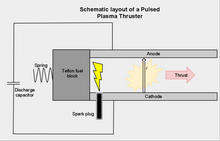CubeSats: The future of miniature satellites
Introduction
Satellites have always been an integral part of space exploration. Elon Musk plans to begin the era of satellite internet. Most of our communications happen through them. But launching each one of them costs too much. So NASA has found a way to reduce the cost. CubeSats. These can be as small as 10 cm x 10 cm x 10 cm. And, of course, when technology is getting smaller everywhere why shouldn’t satellites be? So today I will tell you everything about CubeSats and how they work.
 |
| Image Source - Google | Image by - NASA | CubeSats |
What exactly are CubeSats?
CubeSats are satellites that are very small in comparison to the big satellites. They can be as small as 10 cm x 10 cm x 10 cm and as big as 30 cm x 20 cm x 10 cm. They cut down the cost 30x from the original cost. But can we make CubeSat alternatives for satellites like Lucy? Of course not. Because Lucy can perform many tasks whereas CubeSats perform only one task. But that one task they perform, they carry it out very well. The problem that occurs is when everything (including a communication system, control system, etc.) has to fit in a small satellite, then where do you put the big propulsion systems?
Propulsion systems for CubeSats
Well, the big problem about CubeSats is that they need propulsion systems that can fit in a short space. This is not possible often as greater thrust and propulsion require bigger systems. Most of the CubeSats launched until now have zero or very less propulsion. But our scientists have found some ways that can help with propulsion in CubeSats. But one thing I would like to tell you is none of the propulsion methods use chemical reactions.
Cold gas propulsion
This type of propulsion uses gases like butane, argon or nitrogen and keeps it under pressure. This gas is slowly released. This takes Newton’s third law of motion into action. Every action has an equal and opposite reaction. The gas is released in the opposite direction of the required motion. This moves the spacecraft. This is the simplest of ways of propulsion. However, it does not provide enough thrust so these are used only for altitude control.
Pulsed Plasma Thrusters
These thrusters use the stuff on your non-stick pans. Teflon. And how this works is simple. A block of Teflon is attached to two metal plates and a spark plug is attached to the lower plate. This plug keeps sending shock waves. This changes the state of matter of the Teflon close to the spark. This is where plasma comes into the game. Plasma is a super hot substance that has its molecules farther apart than gases too. It is the fourth state of matter. The Teflon becomes plasma. This creates a circuit between the metal plates which allows electricity to flow. Flowing electricity produces a side effect of creating a magnetic field and the arrangement of things in the thruster makes the plasma flow out. This results in the spacecraft moving in the other direction. The Teflon is attached to a spring at the back that keeps pushing it forward as it is ionized into plasma. These types of thrusters were the first to go into space helping the Russian Zond-1 and Zond-2 to go into space. They are now making a comeback to help CubeSats.
 | |
|
Electron-Cyclotron Resonance(ECR)
This is one of the most complicated ways of propulsion. In this, the electrons of the gas are kept in the chamber. Then, they are subjected to a magnetic field. This makes the electrons rotate in a circular motion. This is called cyclotron motion. Microwaves are then passed through the gas at a frequency completely in sync (or in resonance) with the motion of the particles. This pushes the particles out of the chamber generating thrust. This is much more effective as NASA tested an ion engine like this in the Deep Space 1 Mission which travelled 264 million km on ion propulsion alone.
So these were some methods of propulsion in CubeSats.
CubeSats are developments in space exploration that will cut down the cost. Their first interplanetary mission as MarCO has already been done. They will provide a new revolution in Space Exploration
Comments
Post a Comment